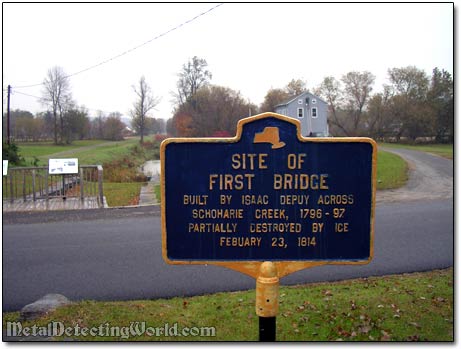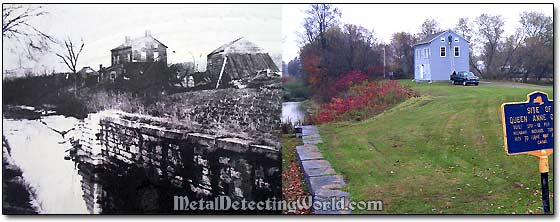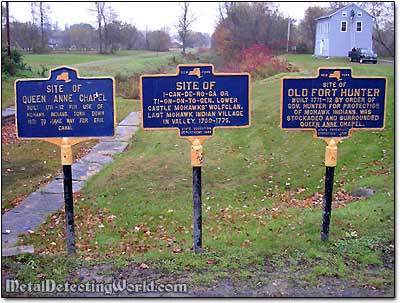Treasure Hunting with Rodney (Story 7) - Erie Canal, East Guard Lock
The State of New York began to enlarge the Erie Canal in the mid-1830s. The boat channel was widened to 70 feet and deepened to 7 feet. The 83 single locks were replaced by 72 double locks. Two lock chambers, each measuring 110-feet long by 18-feet wide, were built right next to one another to allow both eastbound and westbound boats to lock-through at the same time.
A key element to the Erie Canal's operation was controlling the amount of water entering the system. Too much water was more dangerous than too little. The East Guard Lock was constructed because the first canal entered the Schoharie Creek itself, and there was a concern about flood waters flowing into the canal from the creek.
Site of Canal's East Guard Lock and the First Bridge, ca. 1796, Over Schoharie Creek

Most of the structures on the original canal were removed when the Erie Canal was enlarged. The East Guard Lock, however, was used throughout the 19lh century as part of a feeder canal which channeled water into the Enlarged Erie.
On a picture below: on the left - East Guard Lock as part of a feeder canal, picture taken in 1915, on the right - the site of the Erie Canal's East Guard Lock now.
(Courtesy of the Fort Hunter Canal Society.)

But this location has another historical significance. In 1711, the Queen Anne Chapel was built here for use of the Wolf-clan Mohawk indians because their village, 'Icanderoga' or 'Tioontogen' Lower Castle (1700-1775), stood here as well. And by the Governor Hunter 's order, a stockaded fort Hunter was built here to protect the chapel and the indian village in 1712. So much history at one spot! One can only imagine what could be found here with a metal detector!
A "Cluster" of Historical Plaques

